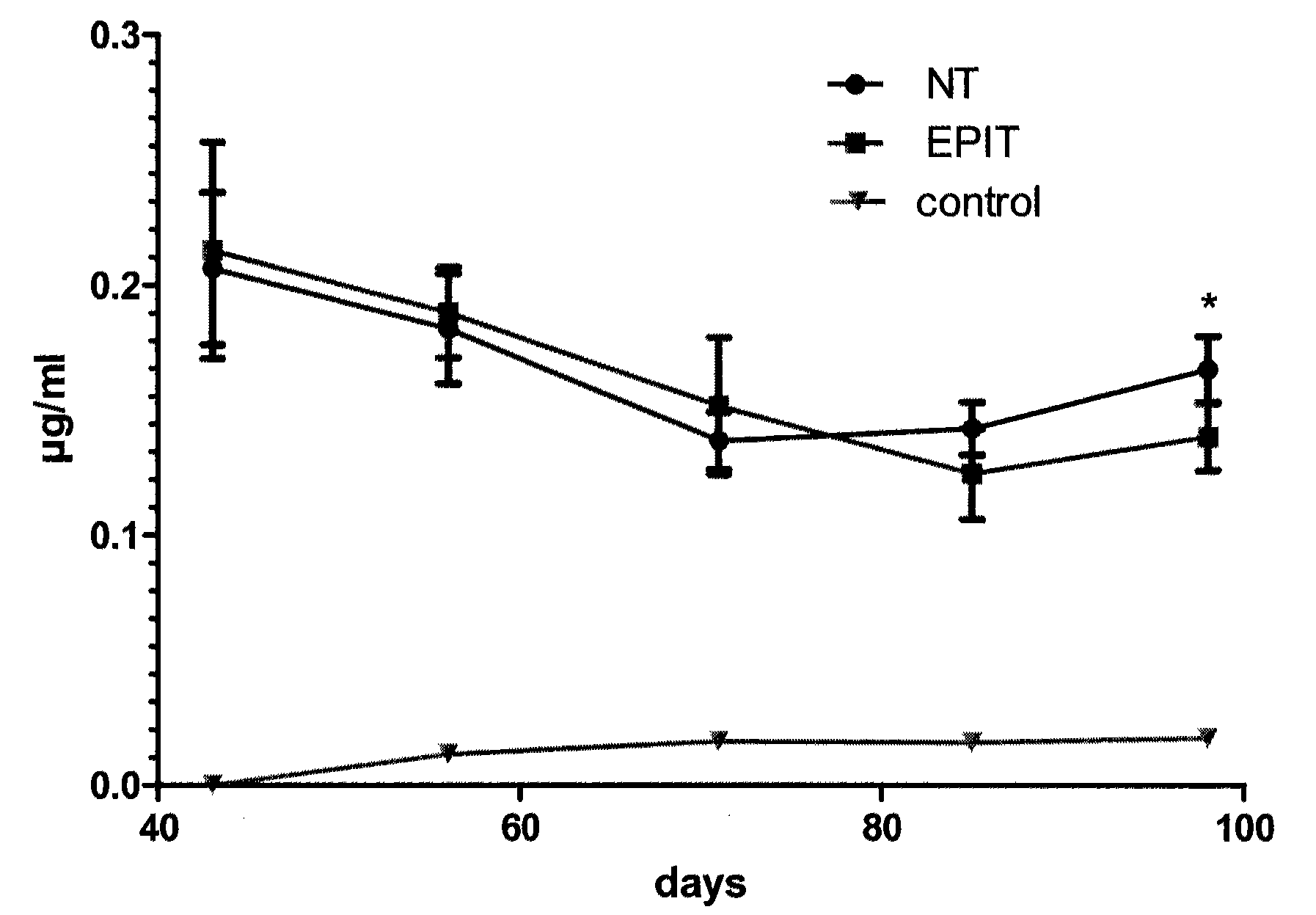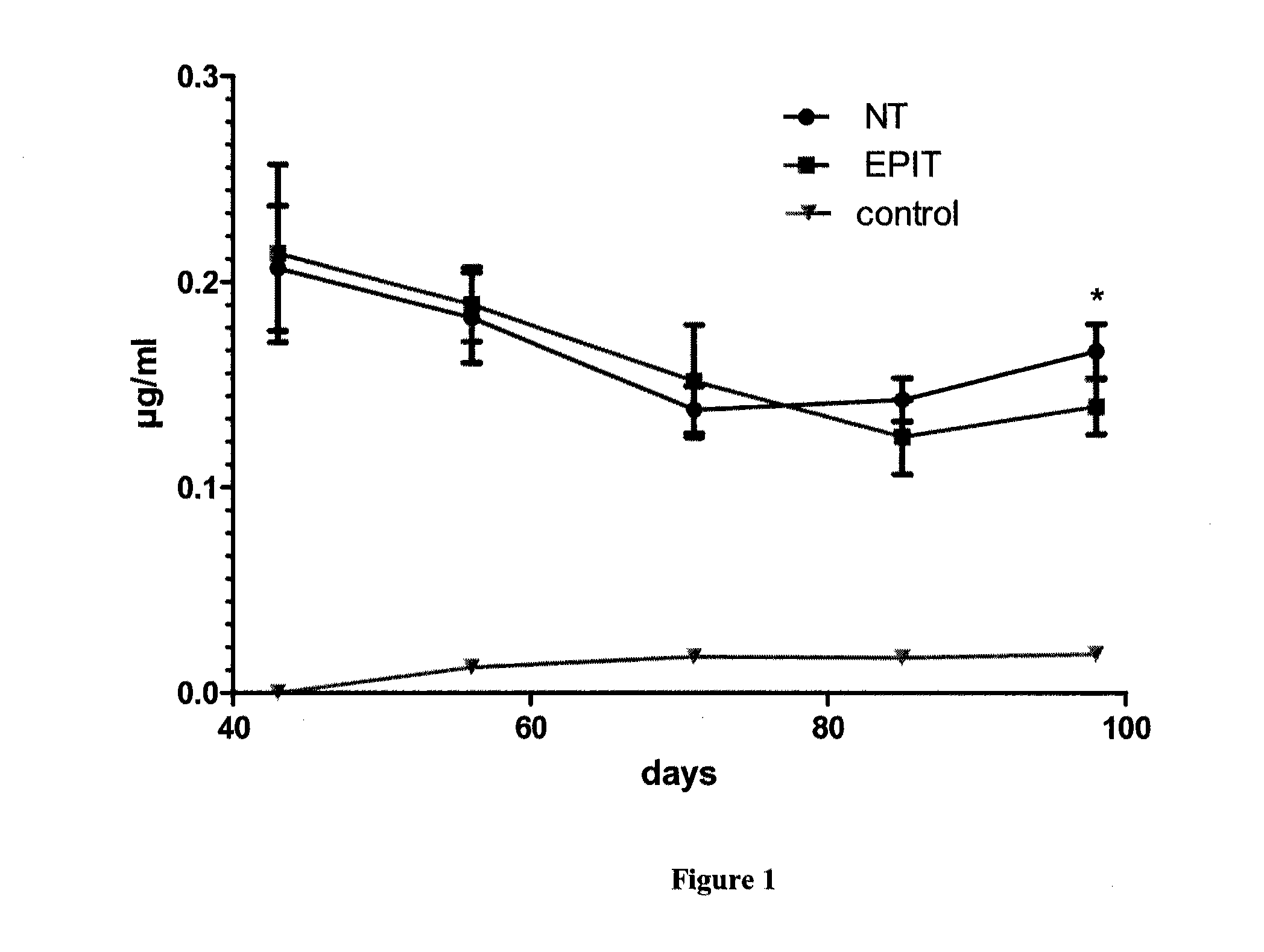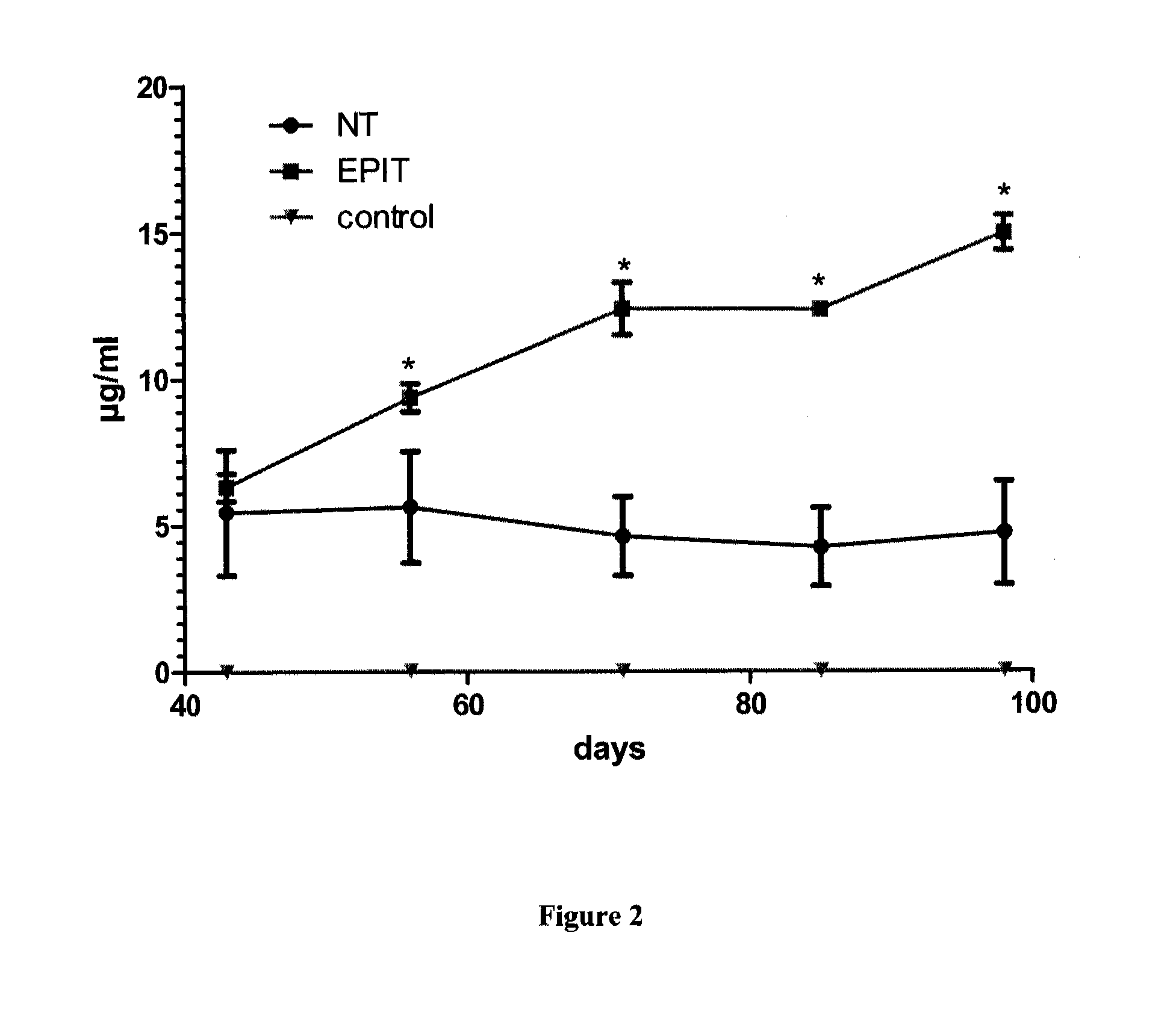Method of treating eosinophilic esophagitis
a technology of eosinophils and esophagitis, applied in the field of treatment of eosinophilic esophagitis, can solve the problems of chronic ee, esophageal candidiasis of patients treated with topical fluticasone, and can develop into progressive esophageal scaring and dysfunction, so as to reduce the other histological patterns of ee and the effect of reducing the infiltration of esophag
- Summary
- Abstract
- Description
- Claims
- Application Information
AI Technical Summary
Benefits of technology
Problems solved by technology
Method used
Image
Examples
examples
Methods
[0081]Study Design
[0082]The feasibility and efficacy of EPIT to treat the eosinophilic esophagitis (EE) was evaluated in a model of mice sensitized to peanut. After a period of sensitization, animals were divided into 2 groups: not treated (NT group) and treated weekly by epicutaneously using the epicutaneous delivery system (EDS) as further described (EPIT), for a total duration of 8 weeks. A control group (C) was also constituted with non-sensitized animals. Blood was sampled for analysis at the beginning and at the end of the experiments, together with histological analyses after oral challenge with peanut allergens.
[0083]Animals and Protein Extracts
[0084]Four-week-old female BALB / c mice (n=30) purchased from Charles River Laboratories (France) were sensitized to peanut proteins. The use of BALB / c mice as murine model of sensitization to peanut proteins was described in Adel-Patient et al, 2005. This model should reproduce the IgE fine specificity and the symptoms as obser...
PUM
| Property | Measurement | Unit |
|---|---|---|
| size | aaaaa | aaaaa |
| height | aaaaa | aaaaa |
| concentration | aaaaa | aaaaa |
Abstract
Description
Claims
Application Information
 Login to View More
Login to View More - R&D
- Intellectual Property
- Life Sciences
- Materials
- Tech Scout
- Unparalleled Data Quality
- Higher Quality Content
- 60% Fewer Hallucinations
Browse by: Latest US Patents, China's latest patents, Technical Efficacy Thesaurus, Application Domain, Technology Topic, Popular Technical Reports.
© 2025 PatSnap. All rights reserved.Legal|Privacy policy|Modern Slavery Act Transparency Statement|Sitemap|About US| Contact US: help@patsnap.com



